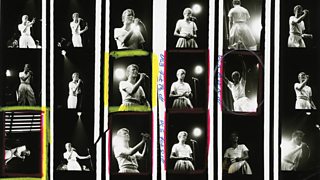Five game-changing cameras that turned us into photographers
20 March 2017
With two billion photographs now being uploaded daily, how did a technically complex pastime, once the preserve of the wealthy, become our most democratic art form? GIL PASTERNAK of De Montfort University presents the five cameras that turned us into a planet of photographers.
1. The Kodak 'Box' Brownie
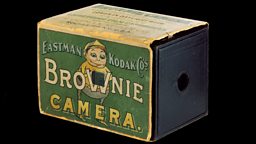
Kodak Brownies – in particular the Reflex, 127, and 44A models - were the most widely used cameras in British households after the Second World War.
The Brownie democratised photography simply through the sheer volume of salesDr Michael Pritchard, Royal Photographic Society
Kodak produced the first Brownie in 1900, modelling it on the luxurious 1888 Kodak box camera that gave the company its name. Made of inexpensive materials such as cardboard, the handheld Brownies were affordable and easy to use.
Virtually anyone could now capture, collect and organise the visual story of their lives for the first time in human history. With Brownies in hand, British families began snapping their celebrations, special moments and daily life on a regular basis.


Facts and figures
First released: 1900
Box Brownie No.1 in February 1900, followed by dozens of models over the next 80 years or so.
Manufacturer: Kodak Eastman
Inventor: Frank A. Brownell
Appearance: A cardboard box with a wooden end
Cost: $1 / 5 shillings in UK
The camera, a roll of film and processing came in at under 10 shillings in total
Picture: Square, 2 1/4" X 2 1/4"
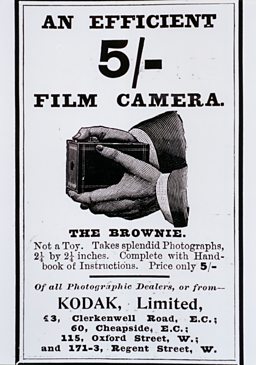
2. Kodak Instamatic

The Instamatic addressed the challenges faced by photographers when loading and unloading roll-films, which if carried out incorrectly could render film unusable.
The Instamatic’s many innovations turned it into one of the most extensively sold cameras of the 20th century
The Instamatic's design incorporated the Kodakpak, a plastic film cartridge of asymmetrical design that simply could not be loaded incorrectly. Many models also featured an automatic exposure function and a built-in flash unit.
The Instamatic’s many innovations turned it into one of the most extensively sold cameras of the 20th century. Its relatively small dimensions often led people to carry it wherever they went, and capture immediate pictures of the fleeting moments they encountered on their journeys.
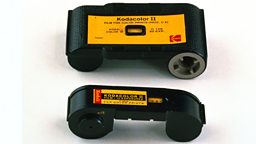
Facts and figures
First released: 1963
Manufacturer: Kodak
Designer: Frank A. Zagara
Appearance: Shiny and rectangular
Cost: $15.95
Impact: More than 50 million Instamatic cameras were produced between 1963 and 1970, primarily in the US, Germany and the UK

3. Polaroid Land Camera

In 1947 Polaroid introduced an instant photographic process, which allowed pictures to be ready within seconds.
Polaroid cameras encouraged the production of more intimate and candid pictures
However, it was 1977 by the time the inexpensive and fully automatic Polaroid OneStep Land model made the instant Polaroid picture integral to family photography.
With a Polaroid it was no longer necessary to expose more than one image, or to wait for the pictures to return from the lab before seeing the results.
By giving users full control over the handling of their photographs, Polaroid cameras encouraged the production of more intimate and candid pictures as it was no longer necessary to put them into the hands of strangers for processing.
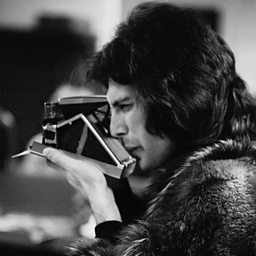
Facts and figures
Introduced: Polaroid Land Camera Model 95 was first made commercially available in November 1948
Manufacturer: Polaroid
Inventor: Edwin H. Land
Cost: $89.75
Impact: Model 95 sales were $5 million in its first year. By 1983, the firm had $1.3 billion annual sales and 13,000 employees.


4. Digital Cameras

Digital cameras already existed in the late 1970s but were only broadly commercialised in the mid 1990s. Considered to be the norm in our time, digital technology enables us to capture and immediately explore huge numbers of photographs at virtually no cost.
Digital cameras also make it possible to apply instant corrections in viewpoint, exposure and focus. Making it easy to use a domestic computer to enhance image quality, crop pictures, and adapt their size, digital cameras bring the full photographic process home.
Families now tell their life stories through homemade digital slideshows and also by photo collages made with domestic printers.
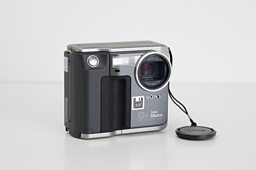
Facts and figures
Introduced: The prototype Sony Mavica, which recorded images onto a floppy disk, was first demonstrated in 1981. It wasn't a true digital camera, as it converted analogue signals for display on TV screens. Sony, as well as Casio, Nikon, Canon, Kodak and Apple, released digital cameras for the consumer-level market from 1994-7 that connected with a home computer via a serial cable.
Cost: The first professional digital camera system, released in 1991 by Kodak, sold for £18,750. This modified Nikon F-3 camera with a 1.3 megapixel sensor was aimed at photojournalists. Canon's PowerShot 600, the first consumer digital camera compatible with hard disk drives, sold for £590 in 1996.
Standards and software: Adobe Photoshop 1.0 was released in 1990. The Joint Photographic Experts Group agreed the JPEG standard in 1994.
5. Mobile phone cameras

The incorporation of photographic technology into mobile phones in the early 2000s massively increased the number of cameras around us. People could access a camera effortlessly, and individuals commonly take pictures of unexpected incidents and mundane activities alike.
Plugging photography into the internet, the introduction of the smartphone turned the online sharing of such pictures into a social convention. In this reality, photographs cease to allude to memories of the past, affecting the experiences of the present instead.
They help us become absorbed in each other’s lives and feel like participants in the realities of friends and family, albeit temporarily and sometimes when separated by great distance.
Dr Gil Pasternak of the Photographic History Research Centre at De Montfort University in Leicester is academic consultant for Smile! The Nation’s Family Album, part of BBC Four's Photography season.
BBC News: The Japanese craze for taking pictures with your phone (June 2001; great comments on this article)



Facts and figures
Introduced: Samsung's SCH-V200 was released in South Korea in June, 2000. Its built-in digital camera could take 20 photos at 0.35 megapixels resolution, although it wasn't truly integrated with the phone - more a phone with a camera attached. Sharp's J-SH04, released only in Japan (November 2000), was the world’s first mobile phone to have an integrated digital camera. It was 0.11 mega pixel and featured a 256 colour display.
Cost: The SCH-V200 retailed at $400 and the J-SH04 was $500.
Impact: By the end of 2003, 80 million camera phones had already been sold worldwide. The first 2 Megapixel camera phone, Nokia's N90, arrived in 2005, and in early 2007 the feature phone's progress peaked with Nokia's 5MP N95.
Smartphones: The drive by manufacturers to produce slim, attractive devices stalled the development of camera phones - the original iPhone in 2007 had a 2 Megapixel camera with no flash or auto-focus and no video recording capability.
Software: As smartphone technology caught up and high-end cameras became standard, manufacturers turned to software to help sell phones - Google's Photo Sphere, Panorama mode from Apple and BlackBerry's Time Shift made photography about more than a single still image.
Peak Megapixels?: After being wiped out by Android and iOS devices, Nokia has recently returned to the consumer smartphone market. Its Lumia 1020 has a 41-megapixel camera.

Photography season on BBC iPlayer
-
![]()
Smile! The Nation's Family Album
A portrait how of we have documented our changing lives via the family photograph.
-
![]()
Britain in Focus
Eamonn McCabe explores the fascinating and remarkable story of British photography.
-
![]()
The Man Who Shot Tutankhamun
The story of photographer Harry Burton, who documented the Tutankhamun excavation.
-
![]()
Dougie Wallace
Following photographer Dougie Wallace as he documents the super-rich in Knightsbridge.
-
![]()
How well do you know your British photography?
From iconic moments of World War One to the polarising work of Martin Parr... take the quiz.
-
![]()
Confronting the one per cent
Glaswegian photographer snaps London's super-rich
-
![]()
Photographing the Heysel disaster
Britain in Focus presenter Eamonn McCabe on the football match where everything changed
-
![]()
Preview Photography season
Watch the trailer for BBC Four's Photography season
-
![]()
Photography season on BBC Four
Explore the past, present and future of photography
-
![]()
Life through a lens
10 great photography features from BBC Arts
-
![]()
When music mattered
The stories behind 10 great rock photographs by Michael Zagaris
-
![]()
Works of heart
15 emotive images from the Magnum vault
-
![]()
Chasing outlaws
How Danny Lyon's images of American outsiders changed photography
-
![]()
Rock Against Racism
Syd Shelton looks back on his work documenting the anti-racist organisation
-
![]()
Best pictures
Capturing the Oscars' golden moments with Marlon, Audrey and Jack
-
![]()
Bob Marley, John Lydon and me
Photographer Dennis Morris on capturing the punky reggae party in the late 1970s
-
![]()
Positive force
The pioneering early photography of Julia Margaret Cameron
-
![]()
Life in colour
Colour photojournalism pioneer John Bulmer's world view
-
![]()
Covering crisis and conflict
Steve McCurry reflects on his 30-year career in photography
-
![]()
The world on film
All photography features from BBC Arts
More from BBC Arts
-
![]()
Picasso’s ex-factor
Who are the six women who shaped his life and work?
-
![]()
Quiz: Picasso or pixel?
Can you separate the AI fakes from genuine paintings by Pablo Picasso?
-
![]()
Frida: Fiery, fierce and passionate
The extraordinary life of Mexican artist Frida Kahlo, in her own words
-
![]()
Proms 2023: The best bits
From Yuja Wang to Northern Soul, handpicked stand-out moments from this year's Proms



















